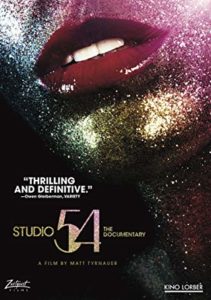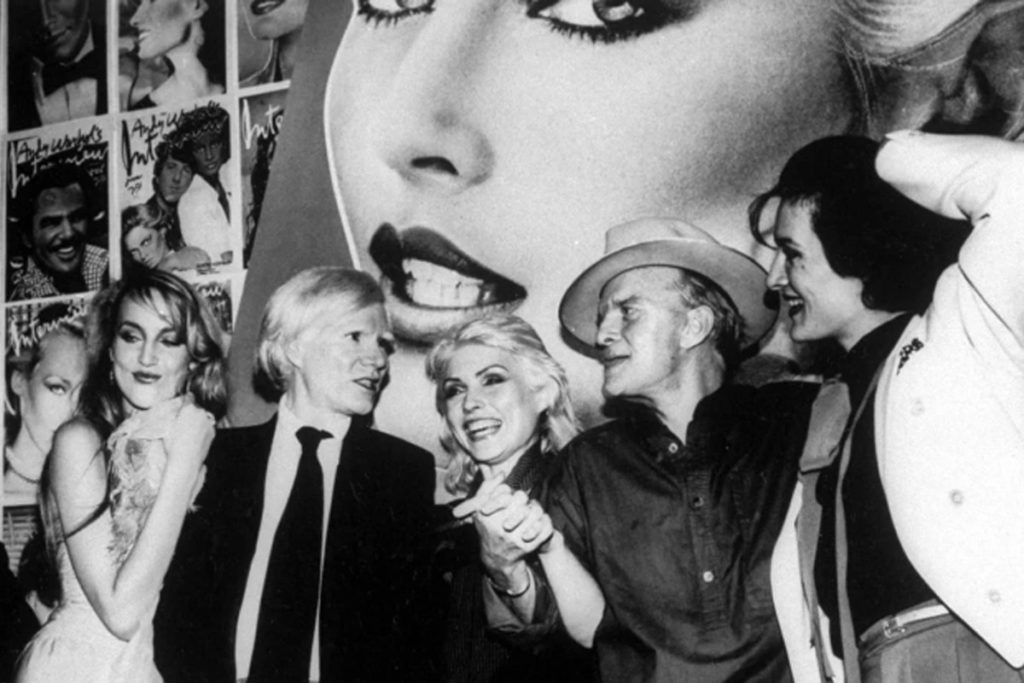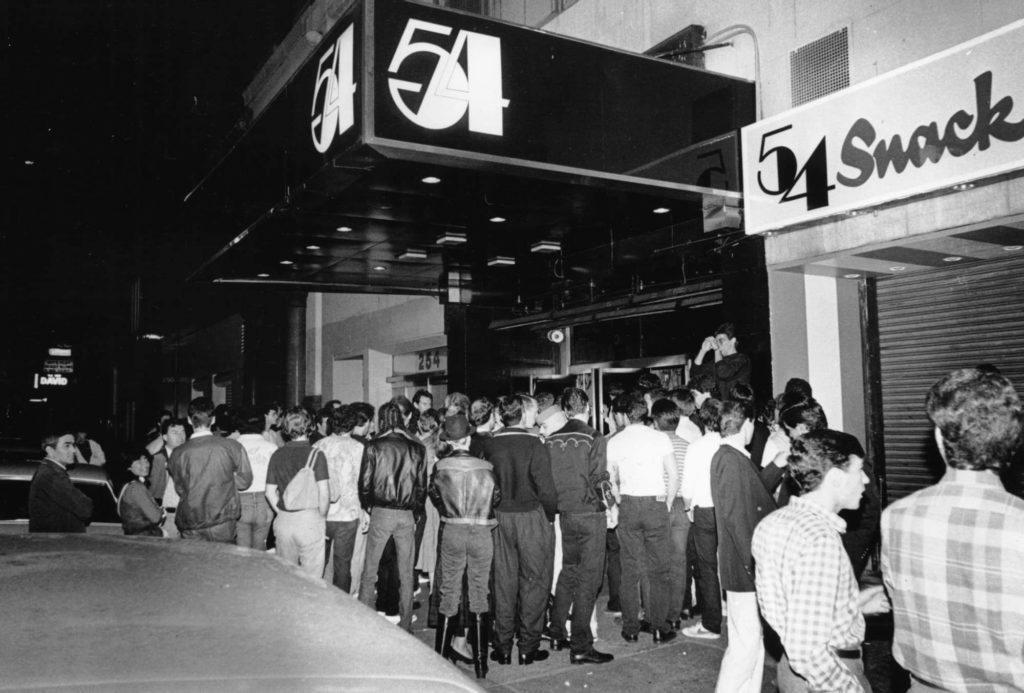Behind the Velvet Rope at Disco’s Hottest Club
DIRECTED BY: MATT TYRNAUER/2018
STREET DATE: JANUARY 29, 2018/KINO LORBER

I never hated disco. There was a brief period in my adolescence when we all loved disco, and then fashions (both literally and musically) turned on a dime and suddenly it seemed everyone was uniting behind the same sentiment: Disco sucks. I never really took that to heart, though. How could you hate Donna Summer or Gloria Gaynor? Who couldn’t be at least a little bit caught up in the lights, the shimmering polyester, that relentless four-on-the-floor beat. Back before disco sucked, when it was still a craze sweeping all of us up in its wake, there was no place that better represented the spirit of the age than the Manhattan nightclub, Studio 54. It wasn’t just the music: Studio 54 was a celebrity gathering spot, a place of notoriously decadent partying in an era when it seemed that America desperately needed to party. Post-Vietnam, post-Watergate, the idealism of the 60s may have faded, but not the sexual revolution or drug culture that the 60s had sparked. At Studio 54 the distance between A-list and C-list celebrities, between the literati and glitterati collapsed. Farrah Fawcett partied with Truman Capote; Divine with Baryshnikov; and if the still photos in Matt Tyrnaur’s new documentary, Studio 54, are any indication, Liza Minnelli was everywhere.

Matt Tyrnaur’s film is a portrait of a long term friendship and business partnership as much as it is a nostalgic picture of Studio 54. The club was the vision of Ian Schrager and Steve Rubell, college friends who saw opportunity in New York’s nightlife. Schrager and Rubell’s particular genius may have been for adapting the atmosphere of gay clubs for a more diverse crowd. Rubell was gay himself, and he and Schrager recognized that even many straight clubgoers wanted the anything-goes atmosphere of the city’s most popular gay clubs. And anything did go at Studio 54, where straight, gay, and trans folk partied together, drugs flowed freely, and the balcony area (a favorite escape for couples) was eventually given a rubber floor to make it easier to hose down. So yeah, the atmosphere was free and accepting (as long as you looked the part to get past the doorman), but it was not exactly wholesome. Studio 54 was open for only a few years – 1977 to 1980 – and Tyrnaur does a fine job of capturing this particular cultural moment, pre-AIDS, pre-War on Drugs. If anything, his view is a bit too rosy, particularly of the crimes that ultimately brought Schrager and Rubell down. The documentary seems to see them as young men too caught up in the mood of the moment to quite recognize the gravity of tax evasion and obstruction of justice.

Rubell died of AIDS in 1989, but Tyrnaur scored big in gaining the cooperation of the famously introverted Schrager for his documentary. Schrager has gone on to a successful career in the hotel industry but has rarely spoken about his years at Studio 54. Here his distinctive voice tells the story of this disco Camelot alongside others who remember the place with almost palpable longing. If you are old enough to remember the era, Studio 54 will stir nostalgia with its glimpses of forgotten celebrities (Yul Brynner, Bianca Jagger), dancing, lights, and music. If you’re too young for those memories, at least listen to the music. I dare you not to move to that four-on-the-floor.

